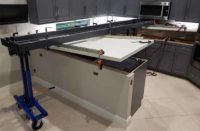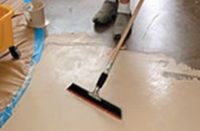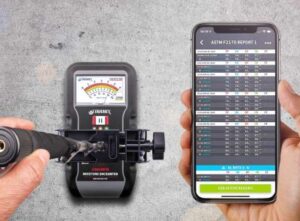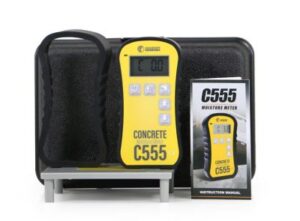Here’s some tips for using your Mohs hardness test kit, adapted from material found at WerkMaster.com.
Since concrete’s makeup differs from region to region, it will vary in hardness and density. A pick set can be used to test both aggregates and cement paste to determine a concrete surface’s hardness. However, readings obtained with this simple test should only serve as a guide to help you determine how to best polish a surface. Always be alert for signs of microtoppings, self-leveling toppings, or filling or patching compounds, as they may have a different hardness. Look for color changes, textured areas or possible edge delamination for clues.
Always start with a higher numbered pick than what you think the hardness will be on the surface being tested. Beginners should start with pick No. 9 until they gain more experience with the testing procedures.
Grasp the pick the same way you would a pen and place the edge of your palm on the floor as if ready to write.
With the same downward pressure you use when writing with a pen on paper, draw a 2-inch line toward you.
You will notice the No. 9 pick produces a scratch very easily. Subsequent picks will leave less and less of a scratch. Do not force any of the picks to scratch.
Continue down the scale until a particular pick doesn’t scratch the surface. If, say, No. 5 leaves a scratch but No. 4 doesn’t, then the floor is about 4.5 on the Mohs scale.
Sometimes the metal left behind from a pick will look like a scratch. If you’re not sure if it’s a scratch or a mark, lightly drag the pick perpendicular across the first line. If it’s a scratch, you’ll feel the pick drop into the groove.
For a more accurate assessment, test the surface in different locations. If the floor was done in more than one pour, you may get varying results.
Picks should always be sharp and in good condition. There’s a small stone in the WerkMaster kit that can be used for dressing the tip.















